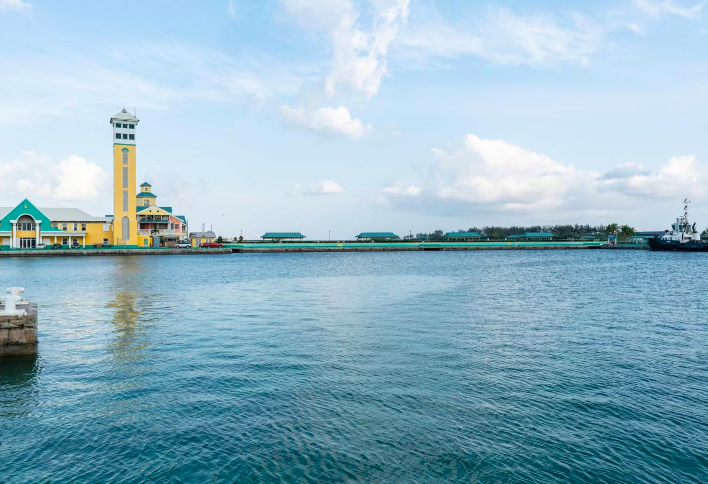“A third-class British colony” is what the Duke of Windsor – former King Edward VIII – called the Bahamas, who was in the archipelago from 1940 to 1945 while serving as Governor General of the island.
Today, the Bahamas is the quintessential traveler’s dream vacation.
Tourism development is such that the country is the third most dependent in the world on this industry, with 60% of its economy tied to the sector, after Aruba (85%) and Antigua and Barbuda (61%), according to the Inter-American Development Bank (IDB).

The Caribbean country has a per capita GDP of around US$30,000, making it a high-income developed country.
At the Caribbean level, it is only below Bermuda (US$ 54,889), the Cayman Islands (US$ 49,686), and Aruba (US$ 36,017), according to the Economic Commission for Latin America and the Caribbean (ECLAC).
It also received media attention by launching the Sand Dollar, the world’s first digital currency issued by a central bank, in October 2020.
More recently, FTX co-founder Sam Bankman-Fried made the Caribbean country synonymous with the cryptocurrency crash.
Independent Bahamas
Historically, this territory of 13,880 km², made up of more than 700 islands and located in the Atlantic Ocean, north of Cuba and east of the Florida peninsula, was the scene of the brutality of conquest and plantation slavery until it was abolished in 1834.
In the 17th and 18th centuries, the Bahamas was a base for piracy and smuggling.
By the early 20th century, the population was mired in widespread poverty and economic stagnation, and the stalemate of World War II led to the decolonization of the British Empire.
This process also marked the Bahamas, when, in the 1950s, the first political parties were formed, and in 1964, a new Constitution came into force that granted the island internal autonomy.
For many historians, the country’s development began in 1967, when Lynden Pindling became the first black ruler of the Bahamian colony.
The following year, the post’s title was changed to Prime Minister.
The same year, Pindling announced that the Bahamas would seek complete independence.
The development of the Bahamas
A new Constitution was approved at the end of 1960, granting the Bahamas greater control over its affairs.
By June 20, 1973, the Government of the United Kingdom granted independence through an Order in Council, enacted on July 10 of that same year, when the then Prince Charles delivered the official documents to Pindling.
Since that date, Independence Day has been celebrated.
On the same day in 1973, the Bahamas joined the Commonwealth of Nations, mostly comprised of former territories of the British Empire.
Subsequently, it joined the International Monetary Fund (IMF) and the World Bank on August 22 of that year and later joined the United Nations on September 18.

Pindling, who is often called the Father of the Nation, managed the country to achieve unprecedented economic growth based on two pillars: tourism and offshore finance.
As a result, the quality of life for Bahamians increased dramatically.
However, it was not all plain sailing, as the prime minister was linked to cartels and acts of corruption.
At the same time, his precariously balanced economic model drifted between deep poverty and extreme wealth, which persists to this day.
The Bahamas is one of several “non-cooperative jurisdictions” in the Caribbean because it does not meet tax fairness and transparency standards, according to the European Union, which in 2022 placed it on the list of tax havens.
Pandemic and Climate Change
The Bahamas, usually affected by hurricanes and storms, suffered in 2019 the onslaught of Hurricane Dorian, which caused 84 deaths and more than US$5.1 billion in losses, according to local reports.
The other recent blow the island has received came with COVID-19, which caused a US$9.5 billion economic impact between 2020 and 2023, with thousands of job losses and lasting effects on the tourism sector, the IDB said in a report.
In a study, the multilateral agency said the impact of these employment losses is estimated at some 30,000 jobs, equivalent to 14.7% of the island’s workforce.
“The Bahamian economy is heavily dependent on tourism, which accounts for more than half of the country’s Gross Domestic Product (GDP),” said Daniela Carrera-Marquis, IDB Representative in the Bahamas.
For example, in 2019 alone, the country attracted 7.2 million visitors, with some 5 million cruise passengers and two million stopover visitors.
For this year, officials remain optimistic about arrivals by air and sea, and expect the country’s economy to grow between 4% and 6%, central bank governor John Rolle said in January.
At that regulator’s quarterly press conference, Rolle noted that the Bahamian economy grew by 7% to 9% in 2022, mainly due to a recovery in tourism inflows.
The official said the Bahamas is still in “recovery mode.”
“Once we move beyond 2023, we expect that, at least in one calendar year, tourism will have recovered the output lost during the pandemic, and the economy will settle into lower average growth rates.”

